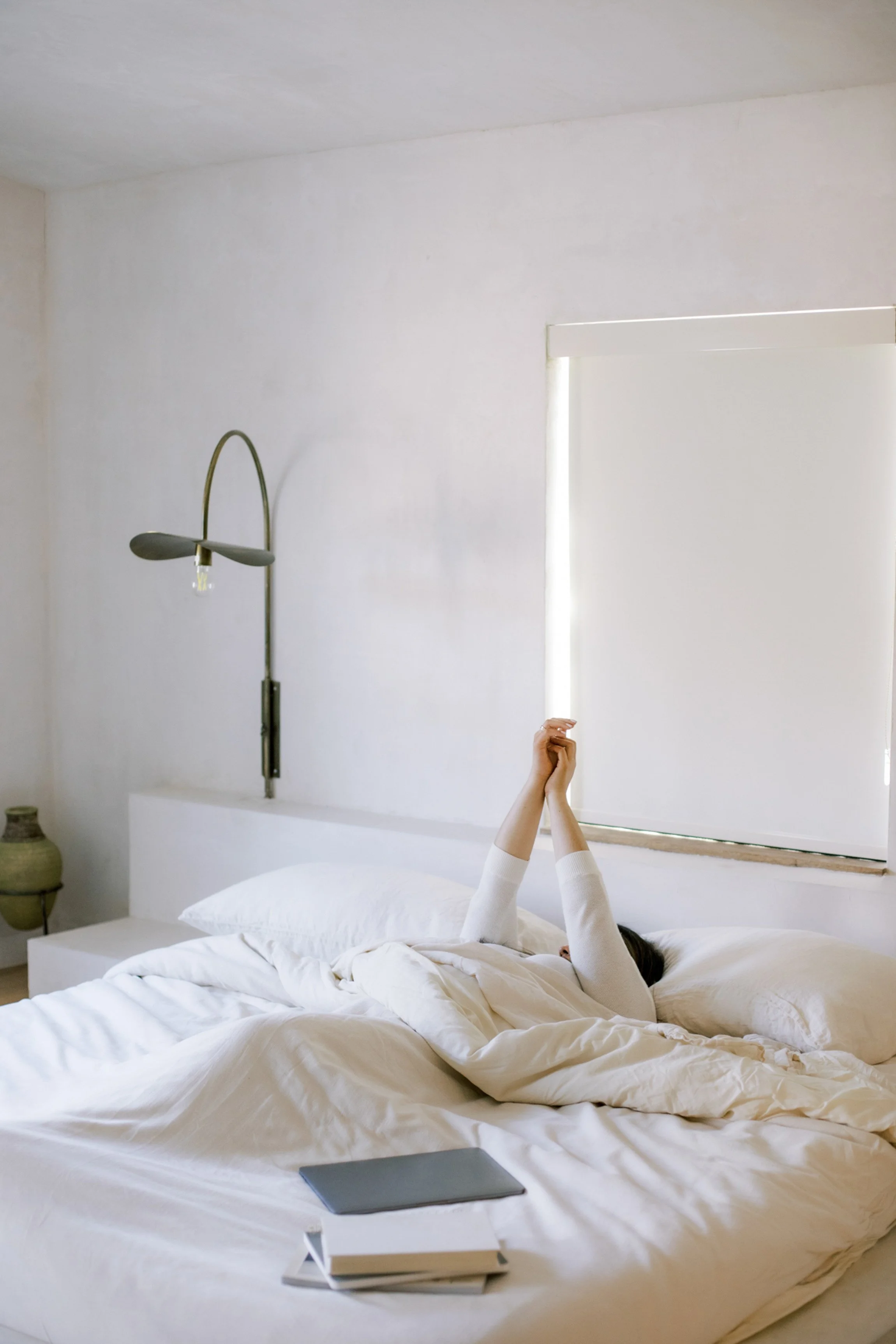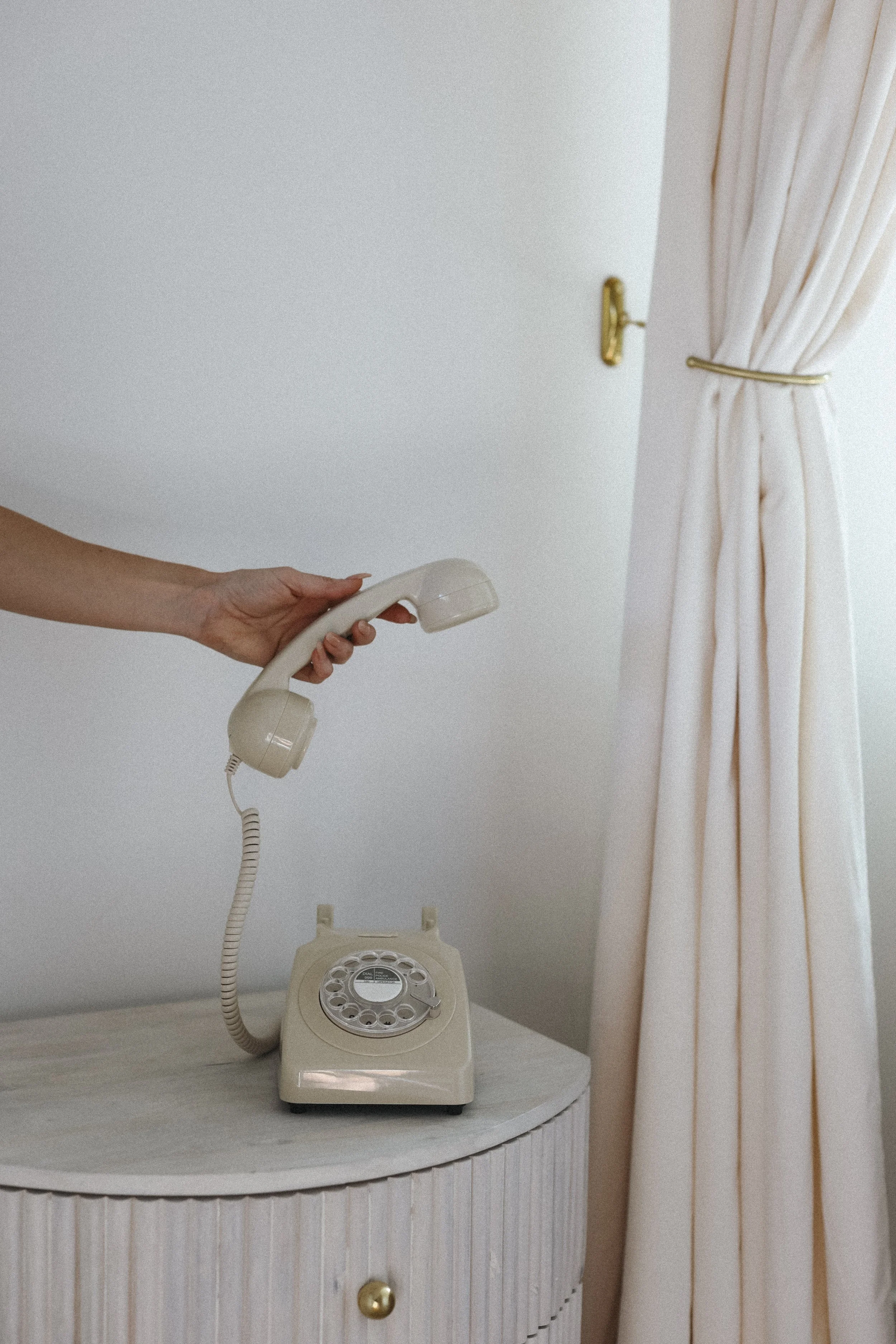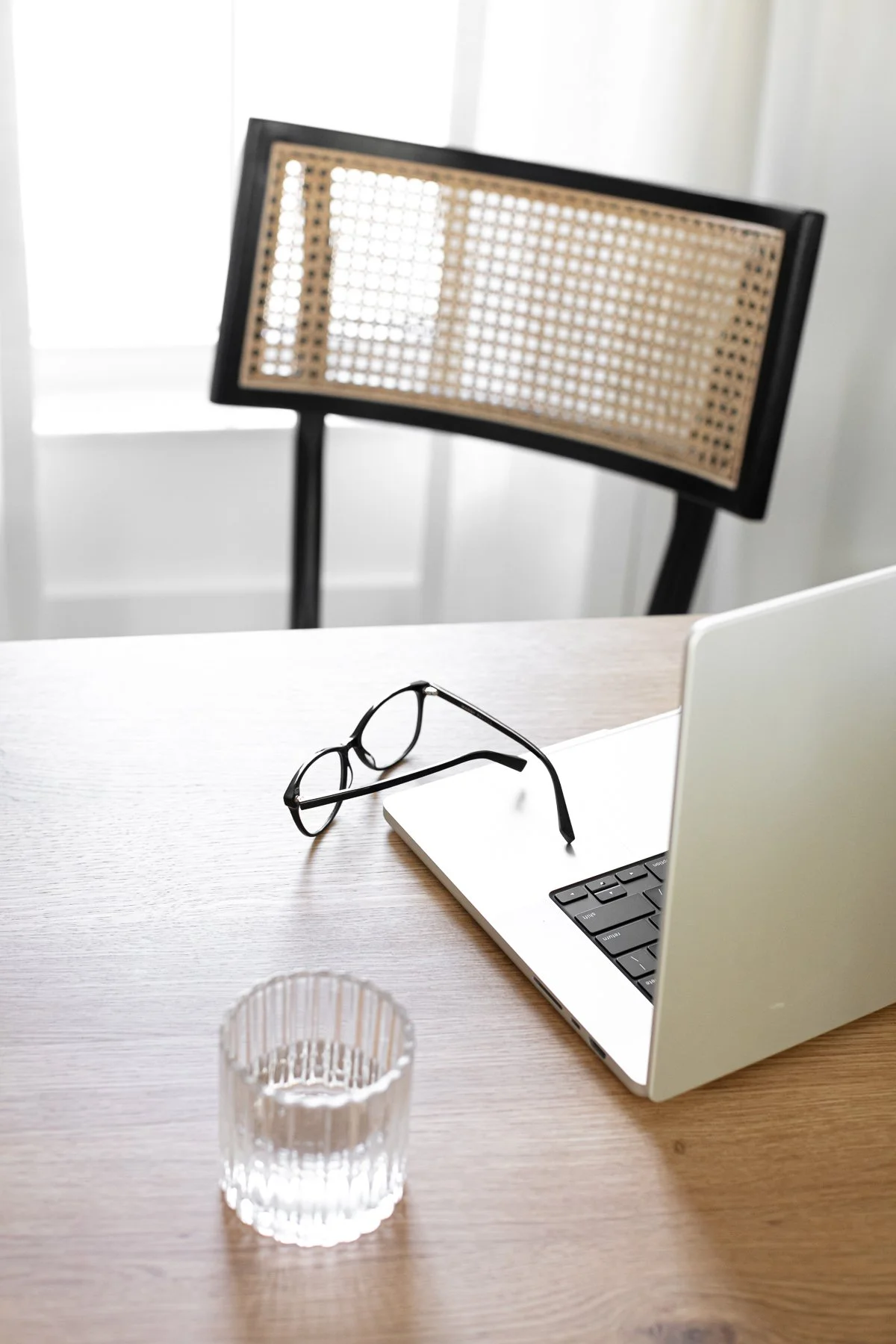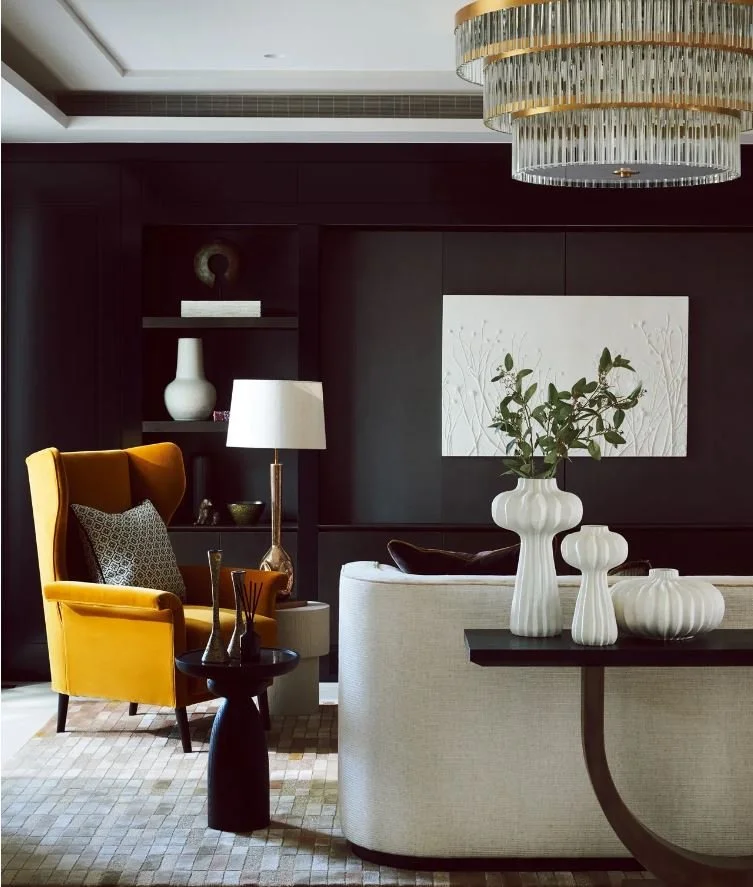Why Copycat Design Kills Confidence (and How to Get Yours Back)
Forget the aesthetic pressure. Here’s what it really means to design with intention, not perfection.Let’s get something straight from the start: Design isn’t about following rules, matching finishes, or impressing your neighbor with your curated shelfie. It’s about feeling grounded, supported, and alive in the space you wake up in every day.
But most of us are taught to start with the surface—Pinterest boards, color palettes, a trending aesthetic.
We ask:
What’s my vibe?
Coastal boho?
Soft minimalist?
Moody urban jungle?
We scroll.
We copy.
We buy neutral everything just to be safe.
Here’s the thing nobody tells you when you start trying to “get into design”: safe design doesn’t make a safe space. And copying someone else’s style doesn’t get you any closer to creating a home that truly fits you.
Design with purpose isn’t about getting it “right.” It’s about getting it real.
Most of the interior design advice floating around the internet is visual junk food—snackable, pretty, but ultimately hollow. You’ve seen it: “Paint your cabinets white.” “Buy this $500 statement bowl.” “Hang three frames in a row like this.” Sure, it might look nice for a photo. But does it feel like home?
Probably not. Because you weren’t designing for yourself—you were designing for Pinterest. Or worse, for other people’s opinions.
Let’s flip that thought.
This isn’t about modern vs. tradition. This isn’t about “what’s in” this year.
This is about how to design with intent—how to build a home that supports the way you live, think, feel, and grow.
Image | Unsplash
Forget the Aesthetic Start With the Feeling
Before you pick a paint swatch or buy a single chair, slow down and ask:
When I walk into this room, what do I want to feel first?
What calms me down? What brings me joy?
Where do I want to recharge? Where do I want to be creative?
What have I been avoiding because it feels like too much effort—or too self-indulgent?
Too often we treat design like a checklist.
We look for the “rules,” the “dupes,” the “must-haves.” And then wonder why our space feels... flat.
Design with intention in the forefront flips that. It’s rooted in real life. In your routines, your values, your quirks, your chaos, your actual needs.
Because your home isn’t a brand—it’s a support system.
Image | Unsplash
Make Peace With What You Already Have
Being intentional doesn’t mean throwing everything out and starting over. In fact, purposeful design begins by looking at what’s already here—and asking better questions.
That hand-me-down cabinet you’ve been side-eyeing for years?
Can you paint it?
Move it?
Give it new legs or a better use?
That awkward guest room no one uses?
What if it became your meditation space, creativity cave, or unapologetic nap den?
You don’t need permission to repurpose. You need curiosity.
Designing purposely reveals itself when you stop trying to control your space—and start partnering with it.
Image | Unsplash
Style Is a Side Effect of Living Honestly
When you design from feeling and function first, style doesn’t disappear—it reveals itself.
Not the Pinterest-ready, algorithm-approved kind of style. The real kind. The kind that comes from paying attention to how you want to live and how you want to feel, not just what you want your space to look like.
You might end up with a velvet chair next to a hand-me-down credenza and a lamp that looks like it belongs in a 1970s sci-fi movie. It won’t make sense on a mood board. But it’ll make sense to you. And that’s what matters.
Because when your space is built around your reality—your needs, your rituals, your stories—style becomes a natural side effect. It shows up without needing to be forced. It builds itself, layer by layer, through objects that feel alive with memory or meaning, colors that light you up even if they’re “off-trend,” and textures that ask to be touched.
This isn’t about getting it “right.” There’s no right. There’s just you, in a space that feels like a mirror of your inner world.
And yes, sometimes that’ll look a little weird. A little mismatched. A little you had to be there. But that’s kind of the point.
We don’t decorate for social media. We decorate for life. And life, at its best, is deeply personal, slightly chaotic, and full of unexpected combinations.
Your home isn’t supposed to make sense to everyone. It’s supposed to feel right to you. Style is what happens when you stop copying and start listening to what you love.
Let Your Home Hold You (Not Stress You Out)
This is the part we don’t talk about enough.
We’ve been trained—subtly, repeatedly—to treat our homes like a bubble of sameness. To decorate for the camera. To curate for guests. To make sure every corner could pass the “Would I post this?” test.
But when did our homes stop being ours?
What about you? The version of you who walks through the door carrying the weight of the day. The one who needs a deep relaxing exhale,not another decision to make. The one who’s tired of chasing “aesthetic” and just wants a space that says: “I’ve got you.”
Decorating or designing with meaning simply means building a space that supports you emotionally, not just visually. That responds to your energy instead of draining it. That makes room for your mess and your magic.
Because real life doesn’t come with mood lighting and folded throws. Sometimes the laundry is on the couch, the dishes are in the sink. Your brain’s doing its best. And your home should still feel like a place that welcomes you—exactly as you are.
Let your space reflect the full version of you—the ambitious you, the burned-out you, the inspired you, the evolving you. Not just the tidy, polished version that shows up for visitors.
Your home isn’t a showroom. It’s a sanctuary. Yes, that word is overused. Still true. And it becomes one—not by chasing perfection—but by choosing presence. When you stop designing for how it looks, and start designing for how it feels.
Create Rituals, Not Just Rooms
We’ve been taught that interior design is about styling a room to impress, to fit, to match, to “make it all make sense.”
But what if that’s not what matters most?
What if the real power of your home isn’t in the paint color or the throw pillow combo—but in the rituals it quietly supports?
Because right now, when the world feels heavy and overstimulating and nonstop… what you need from your home isn’t perfection. It’s peace. It’s energy. It’s restoration.
You don’t need a “finished” living room. You need a place that catches you when you’re depleted and reminds you who you are.
You need:
A spa like bathroom for relaxation where your nervous system says slow down
A chair that holds you while you process hard things
A playlist that starts when you walk into the kitchen—not because it’s aesthetic, but because it makes you want to stay
A soft rug under bare feet at 6 a.m. that signals, it’s comfy here
These aren’t design details. They’re design decisions that shape your entire relationship to your home—and yourself.
We’ve been conditioned to think that a “good room” is one that looks good in a photo. But what if the best spaces aren’t seen at all? What if they’re felt?
That hook you always reach for without thinking. That drawer that holds exactly what you need, every time. That corner you gravitate to when everything feels like too much.
That’s what design with purpose actually means. It’s about honoring how you move, what you crave, what grounds you—and then building your home around that.
We treat rooms like nouns. Fixed. Titled. Done.
But what if we started thinking of them as verbs?
Not “This is the dining room,” but:
Rest here.
Create here.
Reconnect here.
Start your day here.
You don’t need more matching sets. You need rituals that remind you what it feels like to be whole.
Because in times like these—when so much feels outside your control—your home can be a quiet revolution. A place that says: you matter, even now. Especially now.
So forget the aesthetic pressure. Forget “finishing the room.”
Build the rituals. Let the beauty come from the life being lived.
You’re Allowed to Change Your Mind
Here’s the thing: your design taste will change. So will your needs. Your idea of “home” will shift—sometimes gradually, sometimes all at once.
That doesn’t mean you got it wrong. It means you’re paying attention.
It means you’re alive.
Living things evolve. And the spaces we live in? They should, too.
Design with meaning isn’t about choosing a style and sticking to it forever. It’s not about curating a “signature aesthetic” that stays frozen in time. It’s about building a relationship with your space—one that welcomes change, invites curiosity, and leaves room for experimentation.
Because the truth is, you will outgrow certain ideas, colors, layouts, even that sofa you thought you’d never part with. One season you might crave quiet minimalism. The next, saturated color and movement. That’s not indecision. That’s growth.
And when people ask me what my “style” is, I tell them honestly: I don’t have one.
Not in the traditional sense.
Because style, the way most people talk about it, doesn’t really exist for me.
I don’t have a label. I have instincts. I have elements I love. I have a collection of choices that make me feel more like myself—and those evolve.
What I do have is a rhythm. A kind of creative intuition. And I trust it. Because that matters more than fitting into a box someone else defined.
Your home doesn’t need to be timeless. It needs to be timely—aligned with who you are now, what matters most in this chapter of your life, and how you want to feel moving forward.
So move the furniture. Repaint the wall. Donate the decor that doesn’t click anymore. Choose again.
Let your space evolve with you. Not because it’s “on trend.” But because you’re listening to yourself—and that’s the most meaningful kind of design there is.
Ready to Design With Intention?
Here’s How I Can Help:
Imagine transforming your home into a space that actually feels like you. Not just pretty for Instagram—but real, lived-in, full of meaning.
This isn’t about more DIY band-aids or surface-level advice. This is about clarity, confidence, and emotional grounding in every design decision you make.
Our personalized design consultation is made for thoughtful design lovers like you—people with taste, instincts, and a vision… but no clear way forward.
If you’ve followed the advice of DIY decorators or worked with designers who didn’t actually guide you, you’re not alone. We’ve seen it all. And we built this offer to be different.
This is your gut check.
Your design reset.
Your “let’s stop spiraling and start deciding” moment.
What You’ll Get:
A 1:1 conversation where we go deep on what’s working, what’s stuck, and what you really want from your space.
Personalized recommendations that feel like you—not a Pinterest board.
A preliminary moodboard so you leave with visual clarity, not homework you’ll never do.
Tips you can use again and again—so you’re not just fixing one room, but learning how to trust your design decisions moving forward.
Frequently Asked Questions
What are the elements of design and their purpose?
The elements of design include line, shape, color, texture, and space.
Think: line, shape, color, texture, and space. These aren’t just artsy terms—they’re how your home speaks to you. Color sets a mood. Texture invites touch. Space gives your nervous system a break.
Is a good design purposeful?
Yes, a good design is purposeful and shouldn’t be overlooked.
It considers the needs and preferences of the people living in the home while also achieving functional and aesthetic goals. Purposeful design focuses on creating meaningful spaces that enhance the well-being and quality of life for those who live there.
What’s the difference between design and purpose?
Design = the what. Purpose = the why. We build both. Together.
What’s the rule of 3 in design?
Here’s the short version:
Our brains love odd numbers. Especially 3.
There’s just something about a trio—three candles, three vases, three frames—that feels balanced. Intentional. Not too stiff, not too chaotic. Goldilocks energy.
Designers call it the “rule of thirds,” but honestly? It’s more of a cheat code than a rule. It makes your styling look way more polished without trying too hard.
Let’s say you’re decorating a coffee table.
Line up three objects—a tall vase, a stack of books, and something funky like a bowl of matches or a tiny sculpture. You get Visual interest. Depth. Movement. Even if nothing matches, it still works.
Why? Because the unevenness creates just enough tension to keep your eye dancing across the space.
So next time you're styling a shelf or setting the table, skip the symmetry and try a trio. Play with height, texture, and shape. Make it weird. Make it you.
Your Home Won’t Save the World— But It Can Save You
Not in the superhero way. In the everyday, nervous-system-reset, “I can finally breathe” kind of way.
Because when the outside world feels loud, fast, and heavy, your home should be the place that brings you back to yourself.
I’m not here to give you rules. I’m here to help you unlearn the noise, rebuild your instincts, and make aligned design choices that still feel good months after the dopamine hit fades.
This work—the clarity, the gut-check, the deeper “why”—doesn’t belong in a Pinterest-perfect pin or a 10-second Instagram design tip.
It belongs to you. And it takes time. Intention. A different pace.
This is the part most designers skip.
The part that doesn’t look impressive in a before-and-after.
But it’s the part that actually creates change—the kind you can feel when you walk through your front door.
So if you’re ready to create something that supports your whole, real, beautifully imperfect life—








